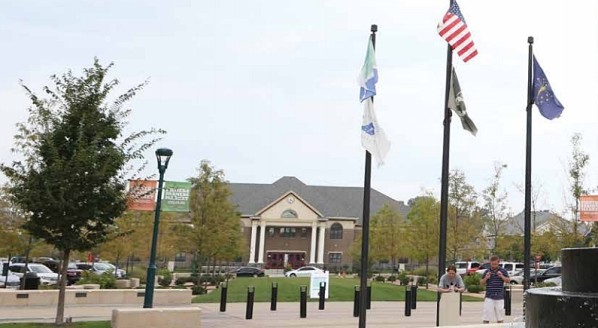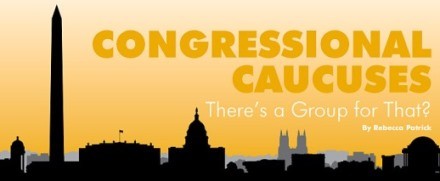As the 2018 General Assembly gets underway, the Indiana Chamber is highlighting three big issues expected to be debated in the coming days and weeks: workforce needs, the opioid crisis and smoking rates.
Indiana Chamber President and CEO Kevin Brinegar says, “We’ve done so well recently from an employment standpoint that we’ve almost outstripped our ability to hire skilled workers since unemployment is so low in the state.
“It’s clear we need to raise up the skills of those who are here, but the Indiana Chamber is also suggesting that perhaps we need to pursue a parallel strategy of recruiting people from out of state. Talent is more mobile than ever before and once people gethere, they really appreciate our cost of living.”
But make no mistake, Brinegar stresses, the state’s priority should be on the potential talent pool at home. That means some major changes will need to occur – ones that hopefully start in the new legislative session.
 “What we’ve been doing wrong is saying, ‘Here is our program, you come use it and we hope that it will solve your needs.’ Instead, there should be a conscious effort to truly listen to employers and then develop training programs that are demand-driven to what the needs of the marketplace are now.”
“What we’ve been doing wrong is saying, ‘Here is our program, you come use it and we hope that it will solve your needs.’ Instead, there should be a conscious effort to truly listen to employers and then develop training programs that are demand-driven to what the needs of the marketplace are now.”
Many of those jobs today and down the road are in the middle skills area – skills that require more than a high school diploma but less than a four-year bachelor’s degree. Brinegar states this should be a focus for both Hoosier workers who need to improve their skillset and young students.
“We know from our member companies that they are reaching down to high schools and even middle schools to explore with students what job opportunities there are with their companies, what skills they need to have, what classes they need to take in high school to be eligible to take those jobs. It’s becoming a lot more focused on getting people ready with some specificity for jobs after high school.
“There will always be the need for a number of jobs requiring a four-year degree or more, but the real growth is in show me what you know, show me what you can do, show me what machinery you can operate. That’s the mindset we need to have to transform some of these government silos … along with listening to employers and creating programs that communicate to young people what those job needs are.”
Additionally, the Indiana Chamber is partnering with the Governor’s office and the state’s drug czar, Jim McClelland, to be the source for the business component of the state’s plan to combat the opioid crisis.
“We will be researching on best practices, disseminating information to employers and putting on training programs. I’ve told the Governor’s office that we want to be part of the effort and part of the solution. It’s a big problem and it’s not going to be solved overnight, but this has become an employer problem in addition to a personal and societal problem,” Brinegar offers.
“We’ve rapidly gotten to the point to where employers almost can’t fire somebody for failing a drug test because there isn’t the depth in the workforce to tap into for new workers. Employers are looking for guidance. They want more information on what they can do, how they can train supervisors to recognize signs and know where the effective treatment programs are.”
The Indiana Chamber, a founding member of the Alliance for a Healthier Indiana, would like the same urgency placed on reducing the state’s smoking rates.
“There are 10 times more people dying from smoking-related illnesses every year than opioids. And it’s the most preventable source of disease,” Brinegar notes.
“We need to improve our health metrics, including obesity, which are in the bottom third of the states. I rarely accept average for anything, but if Indiana rose to be just average when it comes to smoking, that would significantly curb health issues and save those individuals and businesses a lot of money on insurance coverage and health care costs.”
Indiana’s current smoking rate is at 21% of the population; the national average is 15%.
Enhanced workforce efforts and reducing the state’s smoking rates are among the Indiana Chamber’s Top 9 legislative priorities for 2018. The full list is available at www.indianachamber.com/priorities.
 Bills of high importance to the Chamber are labeled with a “priority icon”, while legislation viewed as detrimental to employers and the workforce are denoted with a “job-killer” symbol.
Bills of high importance to the Chamber are labeled with a “priority icon”, while legislation viewed as detrimental to employers and the workforce are denoted with a “job-killer” symbol.

 “What we’ve been doing wrong is saying, ‘Here is our program, you come use it and we hope that it will solve your needs.’ Instead, there should be a conscious effort to truly listen to employers and then develop training programs that are demand-driven to what the needs of the marketplace are now.”
“What we’ve been doing wrong is saying, ‘Here is our program, you come use it and we hope that it will solve your needs.’ Instead, there should be a conscious effort to truly listen to employers and then develop training programs that are demand-driven to what the needs of the marketplace are now.”

 I also thought about the lively and interesting phone interview I had with him in the summer of 2011. The Chamber’s BizVoice® magazine was doing a section on famed business deals and I got the best one: the Circle City landing the Colts.
I also thought about the lively and interesting phone interview I had with him in the summer of 2011. The Chamber’s BizVoice® magazine was doing a section on famed business deals and I got the best one: the Circle City landing the Colts.

 A
A  This commentary, written by Indiana Chamber VP Rebecca Patrick, originally appeared on
This commentary, written by Indiana Chamber VP Rebecca Patrick, originally appeared on